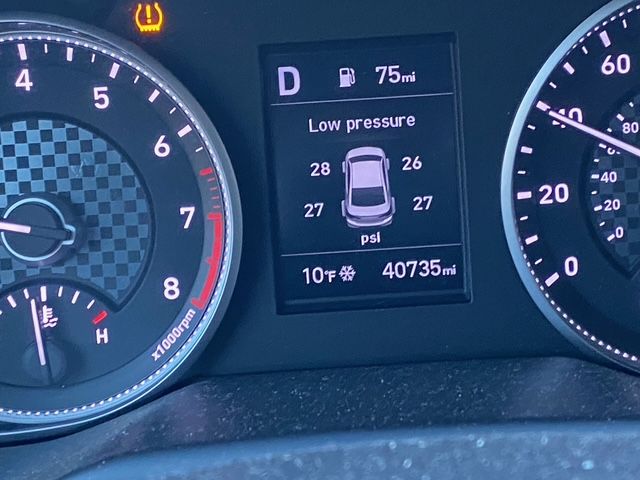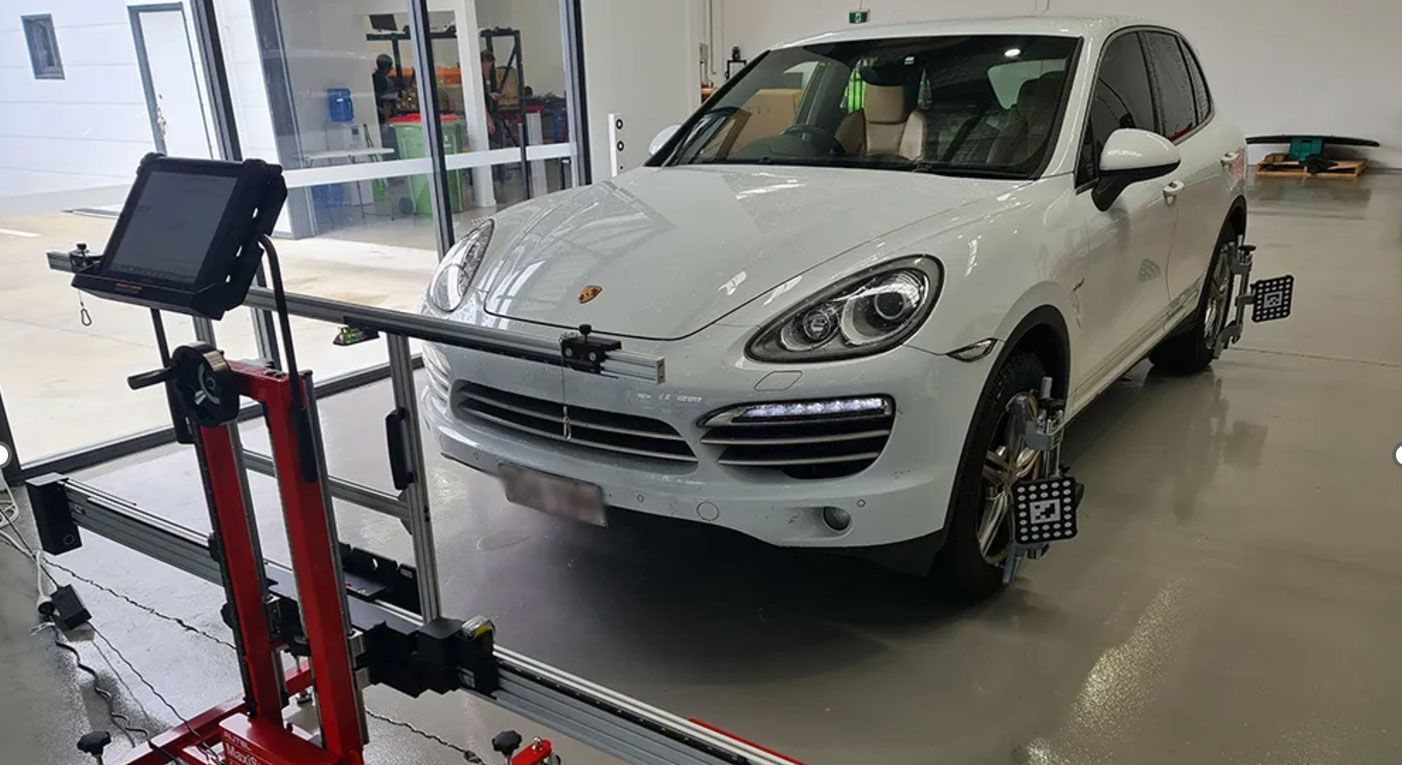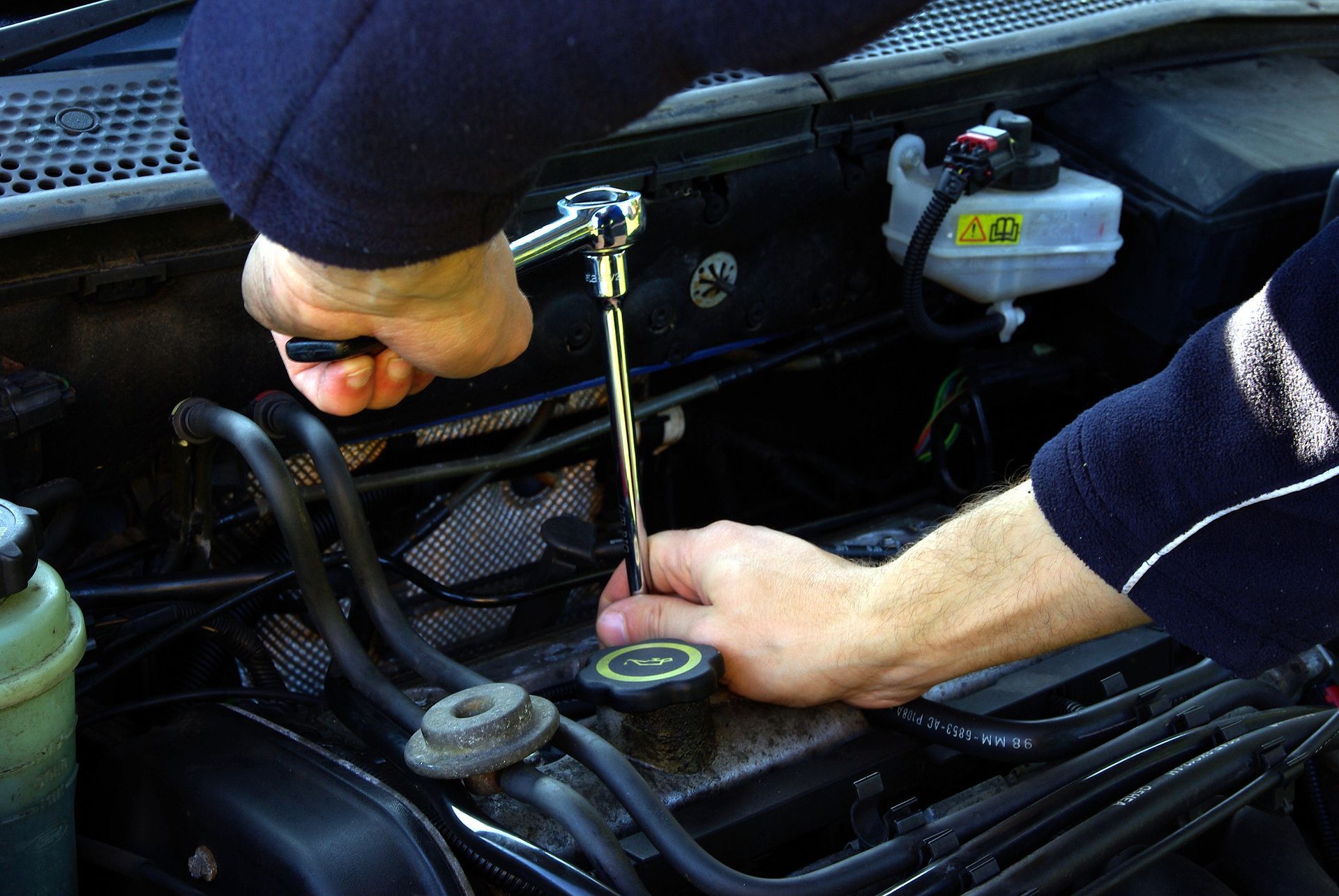How to Prevent Low Tire Pressure in Winter
How to Prevent Low Tire Pressure in Winter

Safety Tips and Maintenance Guide
As winter sets in, many car owners face a variety of vehicle issues that are a direct result of colder temperatures. From dead batteries to frozen door locks, these problems are often obvious. However, one of the most common and dangerous issues that can silently affect your car during the colder months is
low tire pressure.
While you might not notice it immediately, underinflated tires pose significant risks to your safety, vehicle performance, and wallet. In this blog, you’ll learn why tires lose air in winter, the dangers of low tire pressure, and how you can ensure your tires are properly inflated throughout the cold season.
Why Low Tire Pressure is Common in Winter
When the temperature drops, the air inside your car’s tires contracts, causing a decrease in tire pressure. This is a basic principle of physics: as air cools, its molecules slow down and come closer together, leading to a more compact, denser substance. This means that for every 10°F drop in temperature, tire pressure can decrease by 1-2 PSI (pounds per square inch).
If you live in a particularly cold climate like we do, your tires may lose air pressure at a faster rate, and that drop can go unnoticed if your TPMS system is not working as designed —unless you're actively monitoring it. Unfortunately, the effects of low tire pressure aren’t always immediately apparent, but they can quickly turn into a safety hazard.
The Dangers of Low Tire Pressure in Winter
1. Decreased Safety
Low tire pressure significantly impacts your vehicle’s performance. Underinflated tires can make it harder to steer, brake, and maintain control of your vehicle, especially in winter conditions where roads may already be slippery from ice and snow. This increases your risk of accidents and makes driving less predictable.
2. Increased Risk of Blowouts
Perhaps the most dangerous risk of driving with low tire pressure is the potential for a blowout. When a tire is underinflated, more of its surface area comes into contact with the road, generating extra friction. This friction causes the tire to heat up, and if it gets too hot, it could lead to a rupture, resulting in a sudden loss of air and a blowout.
Tire blow outs in winter can lead to loss of control and are a serious driving hazard. Low tire pressure also puts pressure on the sidewall of the tire and the tire is not engineered for that pressure.
3. Reduced Fuel Efficiency and Increased Tire Wear
Underinflated tires also negatively impact your fuel efficiency. When tires don’t have the optimal air pressure, they create more rolling resistance, meaning your engine has to work harder to keep your car moving. This translates into higher gas expenses OR LOSS OF RANGE FOR EV, especially during the long winter months. Additionally, low tire pressure causes uneven tread wear, which can lead to premature tire replacement, costing you even more money.
How to Keep Tire Pressure in Check During Winter
To avoid the safety hazards and extra costs associated with low tire pressure, it’s essential to check your tire pressure regularly during the winter months. A drop of just a few pounds is not enough of a change to set off the tire pressure monitoring system (TPMS) in some manufacturers’ vehicles. Here’s how you can stay on top of it:
1. Check Tire Pressure Monthly (or More Often in Winter)
It’s always a good idea to check your tire pressure at least once a month year-round. However, during winter, you should aim to double the frequency due to the colder temperatures. Tire pressure naturally decreases in the cold, so more frequent checks will help prevent any surprises.
2. Monitor Tire Pressure Using an Air Gauge
For the most accurate reading, check your tire pressure in the morning or after the car has been idle for several hours. Tires that have been driven will warm up, causing the air inside to expand and give a false high reading. Use a high-quality air gauge to ensure precision.
3. Use the Manufacturer’s Recommended Tire Pressure
To avoid underinflated or overinflated tires, compare your readings to the recommended tire pressure found on the driver’s-side doorjamb (there is a sticker usually located on the edge of the door frame when the door is open.) Follow these recommendations for optimal tire pressure.
4. Pay Attention to Tire Pressure Monitoring Systems (TPMS)
Many modern cars are equipped with tire pressure monitoring systems (TPMS), which alert you when tire pressure is low by lighting up the dashboard. While TPMS can be a helpful indicator, it’s not foolproof. If the warning light comes on when you start your car but goes away once you begin driving, you likely still have underinflated tires.
Don’t wait for the light—make tire pressure checks part of your regular winter routine. If the light is on constantly and your tires are at the correct pressure, there is a problem with your TPMS system. If you suddenly develop an issue with your tire, you won’t know it because you ignored the light.
Taking Action: Winter Tire Maintenance for Safety
The winter months demand extra care when it comes to car maintenance, and tires are no exception. Low tire pressure can cause severe safety issues, increased fuel costs, and premature tire wear if not addressed promptly. The good news is that checking your tire pressure is simple, inexpensive, and can help you avoid many of these issues.
Pro Tip: If you find yourself needing to inflate your tires frequently, or if they seem to lose air pressure faster than expected, it might be a good idea to have your tires inspected for leaks or damage by a professional.
Why it is important to check tire pressure in Winter
As temperatures drop, so does your tire pressure. By being proactive and checking your tires more frequently in the winter, you can avoid the dangers of low tire pressure, protect your vehicle, and save money. Don’t let the cold weather sneak up on your tires—ensure they’re properly inflated and ready to handle whatever the season throws at you.
If you’re unsure about how to maintain your tire pressure, or if you need assistance with any winter car maintenance, you can count on Grove Street Auto Repair. If your
tpms light is on, please feel free to stop by either of our locations and ask us to check your air pressure. We would be happy to do it.
You can call us at
508-520-8697, email us at
Service@grovestreetautorepair.com or set up an appointment to drop your car off with us for evaluation right from our website, Grovestreetautorepair.com.
We know that your focus is being able to get wherever you need to go, whether it is work, family activities or to the store for bread and milk before the big snowstorm. Don’t let a low tire pressure situation stop you from getting there! We are ready to help keep your vehicle ready for any road challenge, in any weather! For expert car care and repair services in Franklin, MA, contact Grove Street Auto Repair today.
Your Family Depends on Our Family ®

We perform State Inspections
Mon - Fri 8 AM - 2 PM
Business Hours
- Mon - Fri
- -
- Sat - Sun
- Closed
We perform State Inspections
Mon - Fri 8 AM - 2 PM
Business Hours
- Mon - Fri
- -
- Sat - Sun
- Closed





